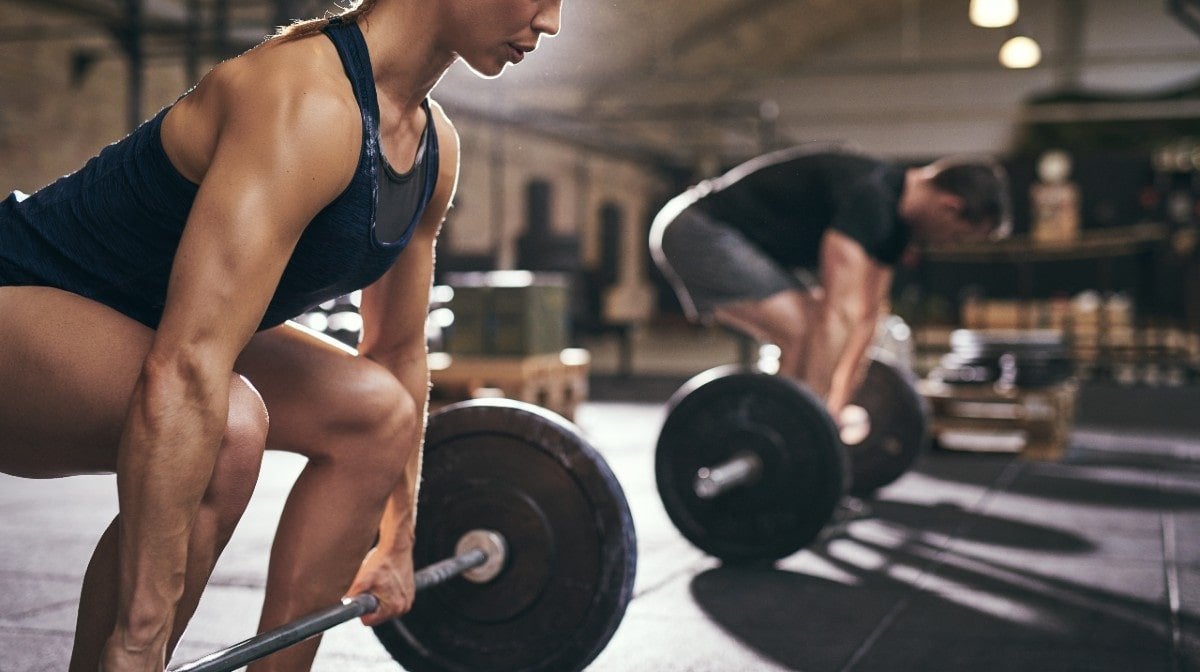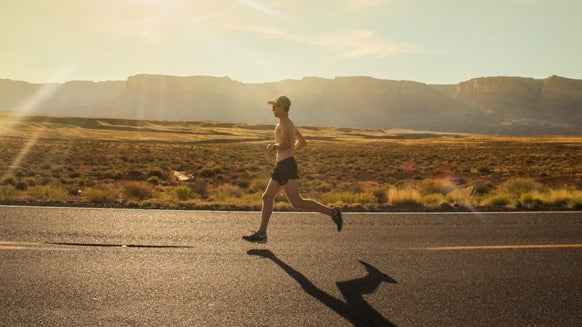How to Improve your Deadlift | Our Top Tips

The barbell deadlift is often referred to as the king of all lifts, as it’s one of the most productive compound lifts when it comes to developing strength. As a hip-dominant movement, the exercise is great for muscle building in the posterior chain, particularly the glutes and hamstrings. In this article, we’ll focus on some of the key benefits of performing the deadlift, and how to do it correctly.
How to improve:
1. Warm Up Properly
An effective warm-up plays is vital to optimising performance. Research has shown that increased muscle temperature contributes to significant increases in force production, while also making the muscle more pliable and less susceptible to injury.
If you are using the deadlift as the main compound lift in a session, it’s important to do a thorough warm-up, covering all the main muscle groups involved in the lift (near enough every major muscle group in your body). Do a few sets of deliberate warm-up exercises following the RAMP protocol (raise, activate, mobilise, potentiate).
Warm-up sets
Starting with the empty bar is always wise — this allows you to drill the bar path and skill aspect while continuing to prepare your muscles for action. As you approach your working loads, gradually increase the load on the bar in increments of around 10-20% of the top set load.
2. Centre the bar
If you are a beginner, this is likely to be a mistake that you only make once! When you grab the bar, you can use the knurling (the rough part of the bar that helps with friction for gripping) as a reference point. It’s important to place each hand on the bar at a symmetrical point, so you could place your hands at an equal distance apart on the first part of the knurling on the bar. The reason for this is to ensure that when you’re pulling on the bar, the load is not unbalanced. Ultimately, this leads to a smoother lift and a lower risk of injury.
3. Ditch the trainers
One of the most important elements of your deadlift set up is your connection with the ground. If you want to lift well, then you need to have a stable base. This cannot be achieved if you are wearing trainers with an inch of foam between your feet and the floor. For a stable base, opt for flat shoes with a minimal amount of material between your feet and the ground.
4. Keep your feet flat
Aim to always make sure that your heels remain on the ground, helping to maintain a strong base. To facilitate this, be sure to keep the bar close to your leg throughout the lift and imagine pushing your heels into the floor while lifting.
5. Use straps or chalk
If you find it difficult to keep a solid grip on the bar throughout the lift, then there are a few things you can do to overcome this. The first and most obvious would be to work on strengthening your grip. Using an overhand grip is more difficult than using a mixed grip, as it relies more on your actual grip strength to prevent the bar from rolling out of your hands. Alternatively, use a hook grip, which involves using your thumbs to pinch the bar and prevent it from rolling.
There are also a few different tools to help you to maintain a solid grip. These include chalk and wrist straps. Chalk comes in a few different forms and will help your hands stick to the bar by removing moisture and increasing friction. Alternatively, straps are used to physically attach your wrists to the bar by wrapping them around your wrists and the bar.
6. Use a Lifting Belt
Another accessory that you may not have considered using is the weightlifting belt. Wearing a lifting belt provides you with something to brace against. Effective bracing involves holding a deep breath and trying to forcibly exhale against a closed epiglottis. This technique is used to increase intra-abdominal pressure and increase core rigidity, which subsequently helps to protect the spine from being injured from excessive movement under load.
7. Improve your squat
As a knee-dominant movement, the squat is one of the most productive exercises when it comes to developing quadricep strength and size. It also helps to develop posterior chain strength in the glutes and back muscles, which will carry over to the deadlift as these are primary muscles used in that lift too.
8. Perform Accessory Exercises
If you want to get better at deadlifts, then you need to deadlift more. That said, performing accessory lifts can also help to rectify any weaknesses that are limiting your progress.
Some of the best exercises for improving your deadlift are:
Rowing moves: bent over rows, one-arm rows, cable rows Pulling moves: lat pulldown, pull-ups Hamstring isolations: hamstring curls, Nordic hamstring curls Glute & Lower back exercises: banded hip abduction, back extensions
Example exercises to improve your deadlift:
Barbell Bent Over Row
Target muscle: This exercise focuses on the back.
- Lean forward at the hips so that you form a 45-degree angle. Keep a slight bend in the knees.
- Breathe out as you pull the barbell towards your chest, pulling back the shoulder blades and flaring the elbows outwards.
- Focus your eyes forwards and keep the back straight throughout the movement as a rounded back is vulnerable to injuries.
- Hold the barbell in this position momentarily, before exhaling and returning to starting position.
Lat pull-down
- Lat exercise sets should finish with a type of shoulder adduction for maximum effectiveness.
- Palms facing forward with arms extended out in front of you — torso around 30 degrees and chest out.
- Exhale as you bring the bar down, inhale returning.
- Squeeze shoulder blades on contraction.
Deadlift Technique Tips
Squeeze your glutes: Otherwise known as mind-muscle connection, this helps you to maximise the effectiveness of each rep by forcing a good muscle contraction in the working muscles. This can lead to improvements in adaptations such as hypertrophy.
Use chains: Attaching chains to the bar results in variable resistance, meaning the load will feel heavier at the top (where it’s easiest) and lighter at the bottom. This can help you to develop positional strength throughout the lift.
Pull the bar into you: Keeping the bar over your centre of mass can help to maintain stability throughout the lift. Keeping the bar close to you will ensure there is a straight bar path, and energy is not wasted during the lift.
Pause at the floor: A common mistake includes grinding out the first rep, then using the rubber platform to help bounce the bar at the bottom of the rep. This means that your muscles don’t have to work as hard on each subsequent rep, so you are mitigating the training adaptations that should be made from lifting. Pausing at the floor forces you to have to lift each rep with control and place your muscles under sufficient tension to stimulate adaptations.
Deadlift more frequently: Increased training frequency means more training volume, which is key for building a solid foundation. While this is not always the case, deadlifting twice a week is likely one of the most productive ways to program this lift.
Proper bracing: This can be done with or without a lifting belt. Bracing increases intra-abdominal pressure and core rigidity, leading to a reduced risk of injury and increased muscular power output.
Pre-Workout Supplements
Taking different supplements before your workout is a great way to increase your energy, focus and endurance, which will help you to work harder and reach your goals quicker.
Caffeine
Caffeine is a cheap and effective way to boost your energy levels and reduce fatigue. It will allow you to train harder while maintaining good concentration and awareness. You may want to avoid using it in the evening though, as caffeine is a stimulant.
Creatine
Creatine is one of the most popular pre-workout aids to contribute to replenishing the adenosine triphosphate (ATP) in your body. ATP is a molecule responsible for transporting energy to numerous cells in your body for increased metabolism.
It provides the energy required to rapidly contract muscles so that heavy weights can be lifted. Fuelling ATP with supplements such as creatine monohydrate will boost the amount of energy given to your muscles, which will increase strength and muscular endurance.
Take Home Message
The deadlift is one of the most powerful and appreciated movements for overall body-transformations — it can provide you with inner and outer strength, in addition to helping you achieve your ideal physique. Practise technique, stick to efficient accessory exercises, work hard and you’ll see great results!
READ MORE HERE:








